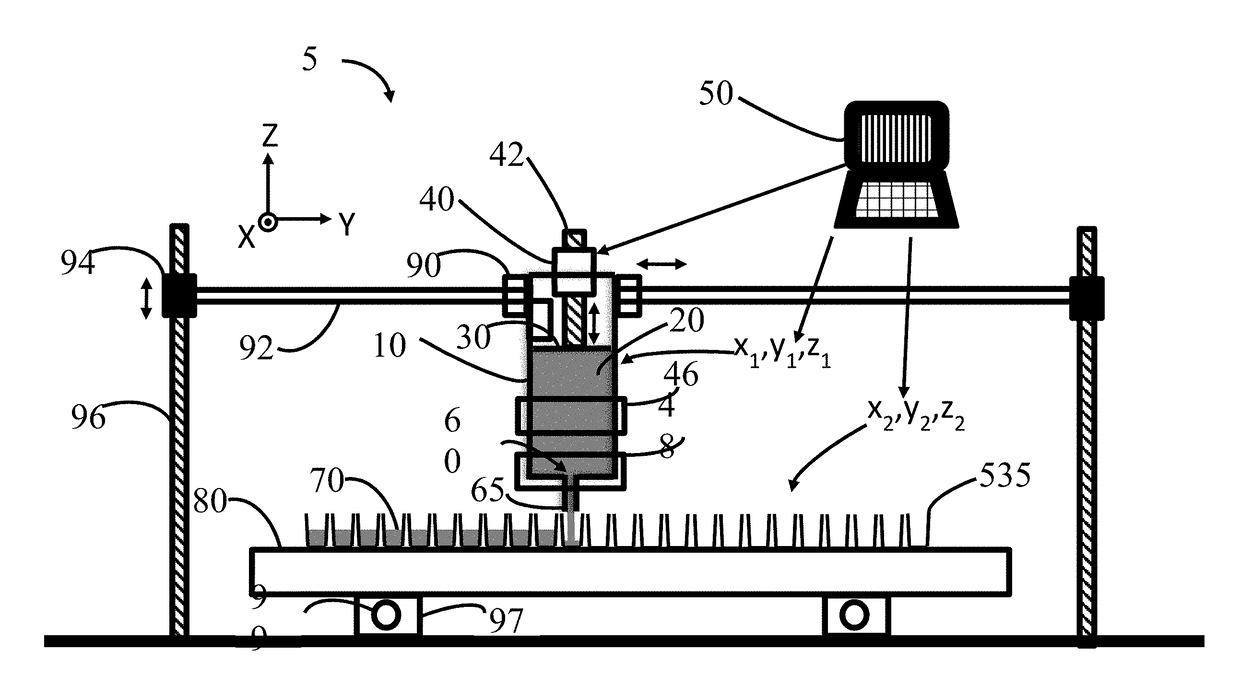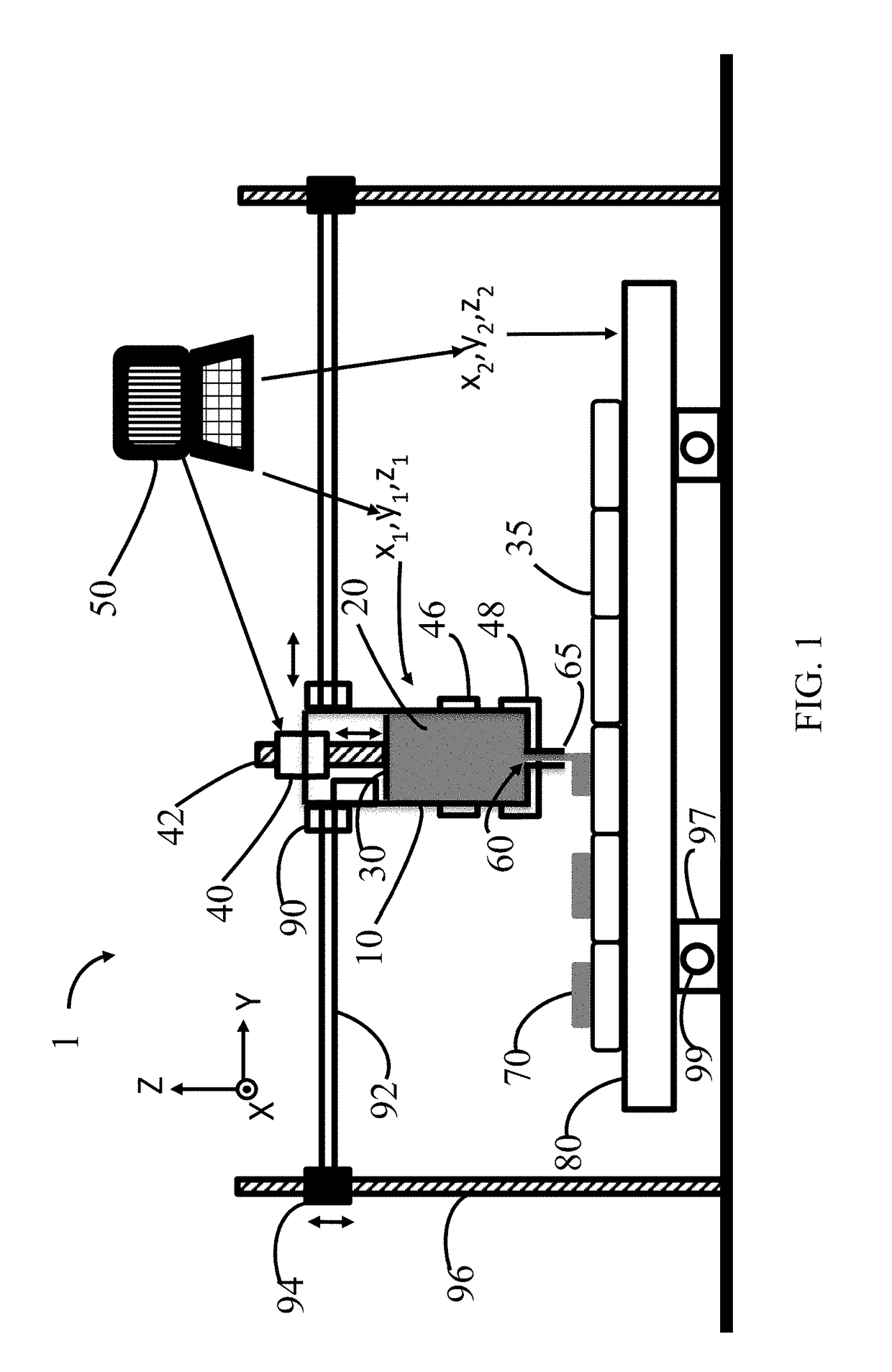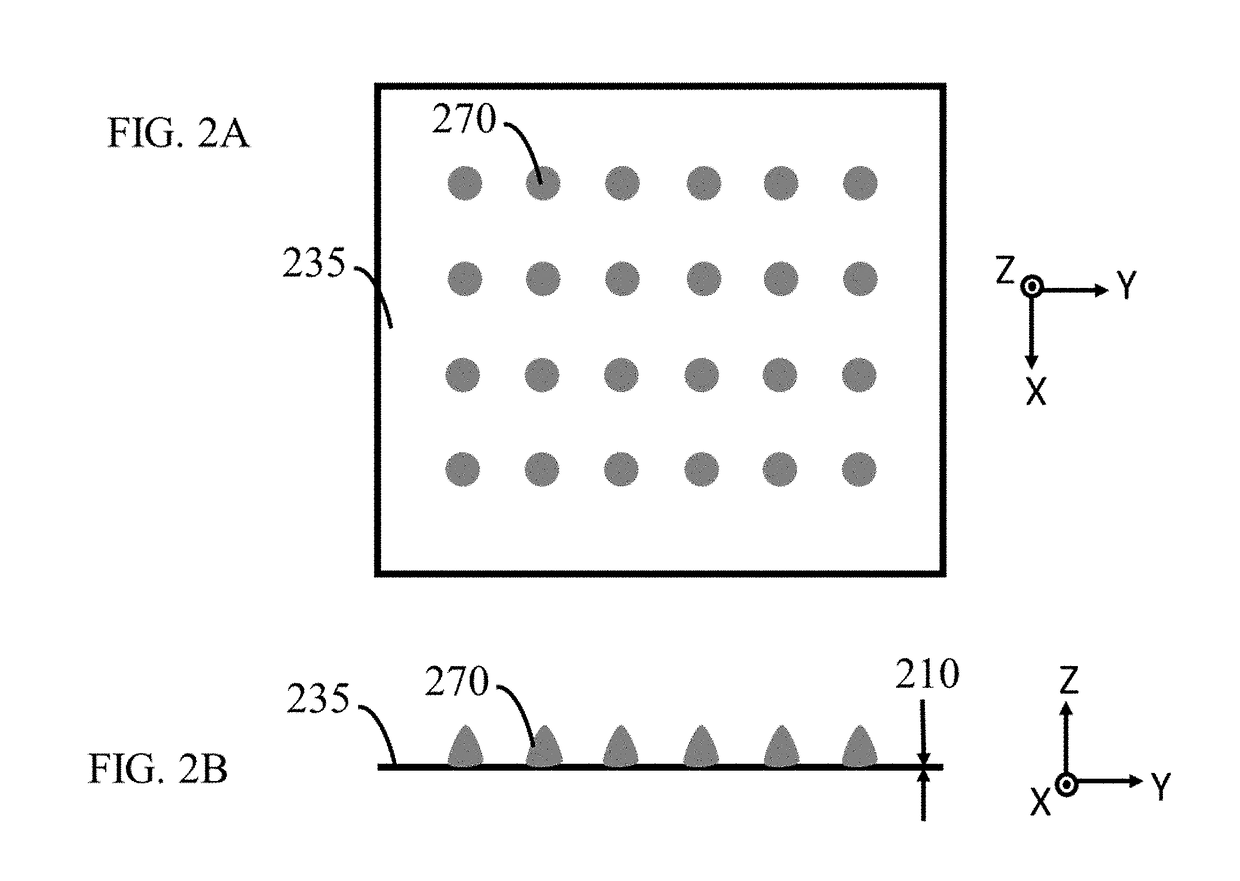Method and Apparatus for Partitioning a Material
a technology of material and partitioning, applied in the field of material partitioning, can solve the problems of difficult or impossible use of materials as feedstocks in current technologies, and achieve the effect of improving the quality of materials and reducing the difficulty of printing
- Summary
- Abstract
- Description
- Claims
- Application Information
AI Technical Summary
Benefits of technology
Problems solved by technology
Method used
Image
Examples
embodiments
[0045]Using the equipment, methods and systems described herein, and illustrated in the figures, a difficult to partition material can be partitioned. For example, apparatus and methods are described for partitioning of viscous and sticky materials such as resins and oils.
[0046]FIG. 1 is a highly diagrammatic view of an apparatus 1 for partitioning a material. The apparatus includes a chamber 10 capable of containing a material 20. The chamber includes at least one movable wall 30. The wall can be made to move by a mechanical device 40 (e.g., a stepper motor) coupled to a screw 42 and nut (e.g., components of a linear actuator) in mechanical communication with the wall. For example, the wall can be made to move up and down in the Z direction as indicated by the double headed arrow next to screw 42. The device 40 can be controlled by a CNC controlling device 50 such as a computer executing an algorithm, and using an appropriate intermediate hardware (e.g., an Arduino motherboard). Th...
example 1
[0099]An extruder such as described by FIG. 6 and having a chamber volume of about 60 mL was attached to a CNC mill having a bed size of 30×50 cm. The extruder was attached to the Z axis of the CNC mill in place of the drilling tool. An Arduino 2560 board was electrically attached to the stepper motors of the Z, X, Y and Extruder. A Marlin open source code was used to flash the board and Simplify 3D (Ver. 3.0.2) slicer program was used to prepare the g-code for a 9×7 array of 63 cylinders each having a diameter of 5 mm and 1 mm height. The extruder was loaded with caramel (Kraft™ Caramels). The block heater 640 was set to 100 degree Celsius and caramel was extruded onto wax paper. The heating tape 685 was not utilized. Two tests were conducted using different extrusion rates. A plot of the weight to portion is shown for each test as FIG. 16 and FIG. 17. After discarding outliers (first 9 portions deposited) the first test gave an average weight per portion of 92 mg with a standard d...
example 2
[0100]An extruder and multi-zone heater assembly as described by FIGS. 10A and 10B having a chamber volume of about 60 mL was attached to a CNC mill as described above. An array of the bottoms of 24 “00” size capsules was loaded into a capsule holder as described by http: / / capsuleconnection.com / capsule-machine / (accessed Aug. 3, 2016). The chamber was charged with coconut oil. The heaters were set to 50 degree Celsius and a g-code program was written and executed by the Arduino board to fill the 24 capsule bottoms. After filling the capsule bottoms the tops were set in place and the capsules weights were measured. The capsules contained and average mass of 0.54 g coconut oil, with a standard deviation of 0.01 g and a range in the data of 0.07 g.
[0101]In a comparative experiment, only the heater closest to the nozzle was utilized. The coconut oil used at room temperature was a waxy solid. Although material did extrude from the nozzle when the temperature was set at 50 degrees C., the...
PUM
| Property | Measurement | Unit |
|---|---|---|
| Temperature | aaaaa | aaaaa |
| Temperature | aaaaa | aaaaa |
| Viscosity | aaaaa | aaaaa |
Abstract
Description
Claims
Application Information
 Login to View More
Login to View More - R&D
- Intellectual Property
- Life Sciences
- Materials
- Tech Scout
- Unparalleled Data Quality
- Higher Quality Content
- 60% Fewer Hallucinations
Browse by: Latest US Patents, China's latest patents, Technical Efficacy Thesaurus, Application Domain, Technology Topic, Popular Technical Reports.
© 2025 PatSnap. All rights reserved.Legal|Privacy policy|Modern Slavery Act Transparency Statement|Sitemap|About US| Contact US: help@patsnap.com



